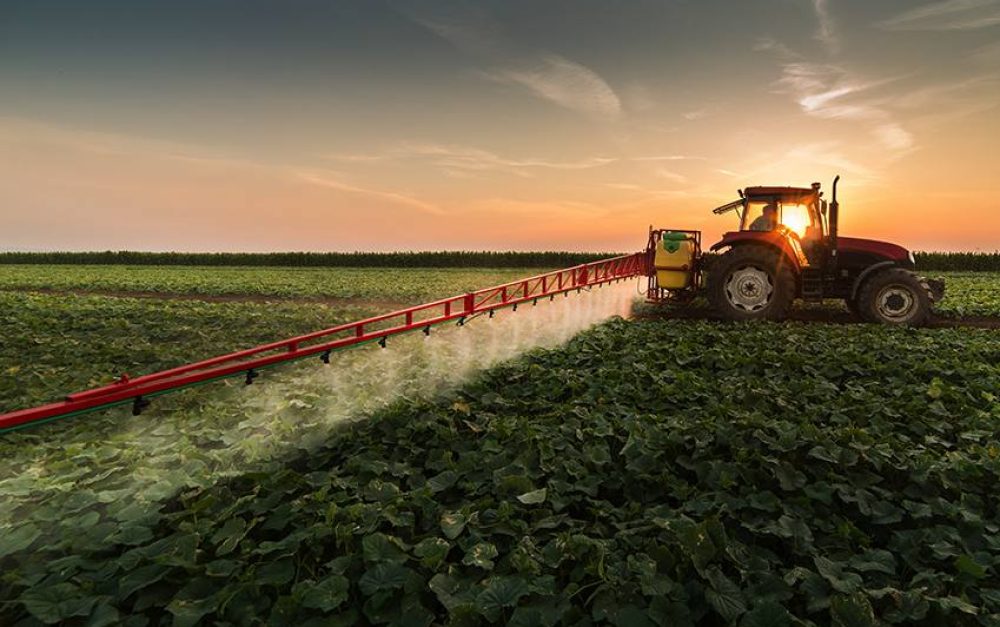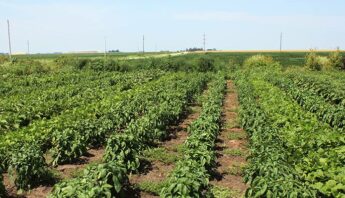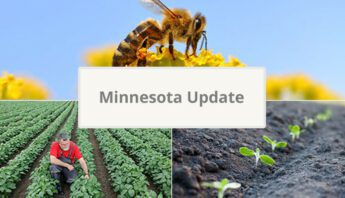Last year, the dicamba drift crisis defined the growing season across the U.S. — damaging an estimated 3.6 million acres of crops. In the months following, PAN, farmers and partner organizations have been taking action and tracking options for how best to avoid another catastrophic dicamba experience in 2018.
Last year, the dicamba drift crisis defined the growing season across the U.S. — damaging an estimated 3.6 million acres of crops. In the months following, PAN, farmers and partner organizations have been taking action and tracking options for how best to avoid another catastrophic dicamba experience in 2018.
The growing season has commenced, and here are a few updates on EPA’s stance on the herbicide, state restrictions in place and precautions farmers are taking against drift.
Farmers address EPA
In March, representatives from several farmer organizations traveled to Washington DC to directly lobby EPA on dicamba. Members of the Iowa Organics Association, National Family Farm Coalition, Organic Farmers Association, and the Northern Plains Sustainable Ag Society traveled to the nation’s capital in person, carrying letters of support from PAN and many other groups.
The group asked EPA not to renew the conditional registration of Monsanto’s dicamba product, Xtendimax, for use on dicamba-resistant soybeans; the registration is set to expire at the end of 2018. The agency responded that it is open to not re-registering Xtendimax, and will be monitoring drift incidents closely this summer. However, we also heard, as we have before, that cases of dicamba drift are being severely underreported.
Arkansas holds on to a ban
In January, PAN shared that Arkansas was leading the charge of states standing up against dicamba damage. State lawmakers approved a plan to ban the herbicide from April 16 through October 31 after receiving nearly 1,000 farmer complaints about the weedkiller drifting into fields and damaging non-dicamba resistant crops.
Monsanto immediately fought the rule, but an Arkansas court dismissed the challenge. Then, a group of six farmers challenged the ban, and though the judge dismissed the farmers’ lawsuit, he also lifted the ban on only those six farmers, deciding they had been denied a legal avenue to appeal the ban.
Over 150 other farmers joined similar lawsuits, and were issued temporary injunctions that allowed them to spray dicamba. However, the state government fought back, and ultimately the requests were rejected by the Arkansas State Plant Board, the farmer-led committee that imposed the ban in the first place. Terry Fuller, one soybean farmer on the committee, understands that some folks are angry about the ban, but he doesn’t regret his vote to shut down dicamba spraying:
“I put forth a good effort, to the best of my ability, to protect the citizens of Arkansas.”
Now, the Plant Board has taken to the air to help enforce the ban, and farmers with damaged soybeans have said they support the effort — farmer John R. McClendon found dicamba damage on his fields last week, despite the ban.
Keeping watch
Dicamba drift incidents are expected to double in 2018. Several ways farmers are protecting their land this year are:
- Registering drift-sensitive crops on Field Watch so that applicators take special care to avoid their fields.
- Reviewing what to do when drifted on, and how to report it.
- Practicing talking to their neighbors about drift, and ensuring that neighbors and surrounding farms also know what to do if experiencing drift.
- Learning how to identify dicamba drift. It takes 14 days for plant damage to emerge after exposure and 20-30 days to see the full extent of damage
PAN will continue working with partners to monitor dicamba developments over the growing season — stay tuned.







